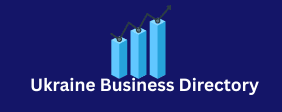Perform on-page SEO
Once you’ve set up your website, it’s time to fill The title tag it with content. Here are some things to keep in mind when creating new pages on your WordPress site.
Find high-potential keywords
First and foremost, you need to find the keywords youThe title tag ’ll build your content around. And not just any keywords, but ones that are most likely c level contact list to drive organic traffic. That means keywords that are frequently searched for by users but aren’t yet being abused by your competitors.
Now, there are many keyword research tools out there, but I would recommend finding the tool that has the most research methods bundled together.
Use <H> headings
Headings are important as both ranking signals and user experience factors. They break up the page into sections, making it easier to navigate and how to survive the economic crisis? keeping users engaged. They’re also a good place to use those keywords we just discovered in the previous section.
To add a heading in WordPress, click the Add Heading button or simply type /heading in the input window:
WordPress allows up to six levels of headings, although <H1> is generally reserved for the page title and there is rarely a need to go beyond <H4>, so we recommend organizing your pages using <H2> headings for main sections and <H3> headings for subsections.
Add a title tag and meta description
By default, WordPress doesn’t let you set these parameters when creating a post. All you’re allowed to create is a page title and a snippet, but these aren’t tagged with the proper HTML tags, so they’re not the same as your title tag and meta description. So, technically, Google is free to create your search snippet from whatever it finds on the page.
If you want a little more control over what is included in your search snippet, you can use a plugin, most likely Yoast, to edit your page title and description metadata. In Yoast, you can choose to edit a snippet and set a title and description that will be different from what you have set as the title and snippet in the WordPress admin:
Both the title tag and meta description are a greatb sault data opportunity to use some of your keywords. The title is where the main keyword for the page is used, while the description is best left for a few keyword variations.
Add alt text for images
Although it’s not its primary function, alt text describes the content of the image to the search engine. Alt text images are often overlooked by content creators, but they can go a long way in getting your images into image search results and improving the relevance of your content overall.
To add alt text in WordPress, go to the Alt text section of the block editor when adding an image to a page. Alt text is meant to be short, crisp, and descriptive, not keyword-heavy.
Useful article : SEO Optimization: The 7 steps to climb Google
10. Optimize your images
Image optimization has always been a part of SEO , but it’s become especially urgent now that Core Web Vitals are judging pages based on speed. One of the vitals, Largest Contentful Paint , is specifically focused on images, as images tend to be the largest pieces of content on any page. So the faster your images load, the better your pages will rank.
The obvious way to make images load faster is to make them lighter, i.e. compress them and use appropriate image formats. If you want to go a step further, you can also postpone images off-screen and work on efficient encoding.
Within WordPress, most of these tasks can be accomplished with an image optimization plugin. Commonly recommended plugins include WP Smush , Imagify , and reSmush.it . Although, if you have a relatively small site and don’t need to process a ton of images, I recommend choosing an external image optimization tool. Online tools like TinyJPG and TinyPNG will do a pretty good job of compressing your images to about half their original size.
